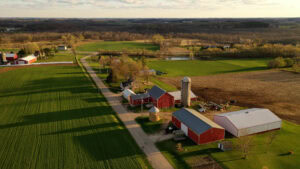How do you choose what community you want to live in? Maybe it’s job availability, housing markets, or wages even. What’s drawing you to that community? And what assets does it have that other communities may not? These are the questions that UW-Madison researchers are asking in a new rural livability project. Matt Kures, UW-Extension Distinguished Community Economic Development Specialist and Researcher says the goal is to create a blueprint to help best serve Wisconsin communities.
“The initiative is examining key components such as access to jobs, entrepreneurial opportunities, critical institutions, healthcare, education, and even factors like restaurants,” explains Kures. “The goal is to understand why individuals choose to live in a particular community and how those factors can be improved to encourage residents to stay and thrive.”
Addressing the challenges in the Wisconsin labor market, the research highlights record-low unemployment rates and a tight labor market, especially in rural areas. It emphasizes the need for innovative approaches to attract and retain residents. It addresses key barriers such as childcare demands and inadequate transportation.
The study also sheds light on the impact of commuting, with a rise in rural residents commuting to larger employment centers. The pandemic has induced changes in work patterns, leading to increased remote work and even the establishment of businesses in response to a desire for improved quality of life.
The research team acknowledges that creating a perfect livability scenario for everyone is a complex task. Structural challenges, population aging, and historical migration patterns are factors that need consideration. However, Kures emphasizes the importance of community partnerships and regional cooperation as key strategies for overcoming shared challenges.
“The goal of enhancing livability is not solely about attracting newcomers. It’s also about improving the quality of life for existing residents,” says Kures. “Communities are encouraged to define their vision for the future, considering the unique aspirations and characteristics of their residents.”
To engage communities and foster a sense of rural livability, Kures encourages individuals to reflect on their community’s assets, both past and present. He says it recognizes the importance of returning and preserving valued aspects of community life to make it more livable for residents.


